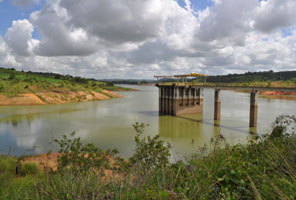Hard paths, soft paths or no paths? Cross-cultural perceptions of water solutions
Published in Hydrology and Earth Systems Sciences, January 13, 2014.
Authors
Amber Wutich, School of Human Evolution and Social Change, ASU
A.C. White, School of Human Evolution and Social Change, ASU
Dave D. White, School of Community Resources and Development, ASU
Kelli L. Larson, School of Geographical Sciences and Urban Planning, ASU
Alexandra Brewis, School of Human Evolution and Social Change, ASU
Christopher Roberts, School of Human Evolution and Social Change, ASU
Abstract
 In this study, we examine how development status and water scarcity shape people’s perceptions of “hard path” and “soft path” water solutions. Based on ethnographic research conducted in four semi-rural/peri-urban sites (in Bolivia, Fiji, New Zealand, and the US), we use content analysis to conduct statistical and thematic comparisons of interview data. Our results indicate clear differences associated with development status and, to a lesser extent, water scarcity. People in the two less developed sites were more likely to suggest hard path solutions, less likely to suggest soft path solutions, and more likely to see no path to solutions than people in the more developed sites. Thematically, people in the two less developed sites envisioned solutions that involve small-scale water infrastructure and decentralized, community-based solutions, while people in the more developed sites envisioned solutions that involve large-scale infrastructure and centralized, regulatory water solutions. People in the two water-scarce sites were less likely to suggest soft path solutions and more likely to see no path to solutions (but no more likely to suggest hard path solutions) than people in the water-rich sites. Thematically, people in the two water-rich sites seemed to perceive a wider array of unrealized potential soft path solutions than those in the water-scarce sites. On balance, our findings are encouraging in that they indicate that people are receptive to soft path solutions in a range of sites, even those with limited financial or water resources. Our research points to the need for more studies that investigate the social feasibility of soft path water solutions, particularly in sites with significant financial and natural resource constraints.
In this study, we examine how development status and water scarcity shape people’s perceptions of “hard path” and “soft path” water solutions. Based on ethnographic research conducted in four semi-rural/peri-urban sites (in Bolivia, Fiji, New Zealand, and the US), we use content analysis to conduct statistical and thematic comparisons of interview data. Our results indicate clear differences associated with development status and, to a lesser extent, water scarcity. People in the two less developed sites were more likely to suggest hard path solutions, less likely to suggest soft path solutions, and more likely to see no path to solutions than people in the more developed sites. Thematically, people in the two less developed sites envisioned solutions that involve small-scale water infrastructure and decentralized, community-based solutions, while people in the more developed sites envisioned solutions that involve large-scale infrastructure and centralized, regulatory water solutions. People in the two water-scarce sites were less likely to suggest soft path solutions and more likely to see no path to solutions (but no more likely to suggest hard path solutions) than people in the water-rich sites. Thematically, people in the two water-rich sites seemed to perceive a wider array of unrealized potential soft path solutions than those in the water-scarce sites. On balance, our findings are encouraging in that they indicate that people are receptive to soft path solutions in a range of sites, even those with limited financial or water resources. Our research points to the need for more studies that investigate the social feasibility of soft path water solutions, particularly in sites with significant financial and natural resource constraints.
Citation
Wutich, A., White, A. C., White, D. D., Larson, K. L., Brewis, A., & Roberts, C. (2014). Hard paths, soft paths or no paths? Cross-cultural perceptions of water solutions. Hydrol. Earth Syst. Sci., 18(1), 109-120. doi: 10.5194/hess-18-109-2014
Read the entire article at Hydrology and Earth Systems Sciences.

